Tom's Guide Verdict
The JBL Clip 5 is a great Bluetooth speaker that’s truly portable, thanks to a clip that lets you hook it onto an array of things, and it boasts excellent sound quality. However, cheaper rivals have the edge when it comes to battery life and EQ settings.
Pros
- +
Impressive audio
- +
Portable with a large clip opening
- +
Waterproof and dustproof
- +
Supports Auracast
- +
Good battery life
Cons
- -
Auracast limited to JBL speakers
- -
EQ settings aren’t great
- -
Costs more than rival brands
Why you can trust Tom's Guide
Price: $79 / £59
Colors: Red, purple, blue, white, black, camouflage
Size: 5.3 x 3.4 x 1.8 inches
Weight: 10.05 ounces
Battery life (rated): 12 hours or 15 hours (Playtime Boost)
Connectivity: Bluetooth 5.3
Waterproofing: IP67
In the summer of 2024, audio giant JBL announced it would be updating three popular speakers, with the ultra-portable JBL Clip 5 being one of them — not to be confused with the JBL Flip 5. The Clip 5 is the ideal companion for long hikes, beach trips and for soundtracking social gatherings.
The Clip 5 is a small but mighty speaker, boasting impressive sound quality and decent battery life. It takes what its predecessor did right and improves on it. With a stylish design and a clip that lets you hook the speaker onto most things, the Clip 5 could see itself placed amongst the best cheap Bluetooth speakers.
But at $79, is it value for money when many of its competitors offer the same features but at cheaper price points? Read our full JBL Clip 5 review to find out.
JBL Clip 5 review: Price & availability
Launched in June 2024, the JBL Clip 5 speaker is available from JBL direct or from Amazon for $79 / £59. There are six colors to choose from: red, purple, blue, white, black, camouflage. The Clip 5 succeeds the Clip 4 which has the same retail price. Its price tag pits it against the likes of the Tribit StormBox Flow ($79).
JBL Clip 5 review: Design & controls
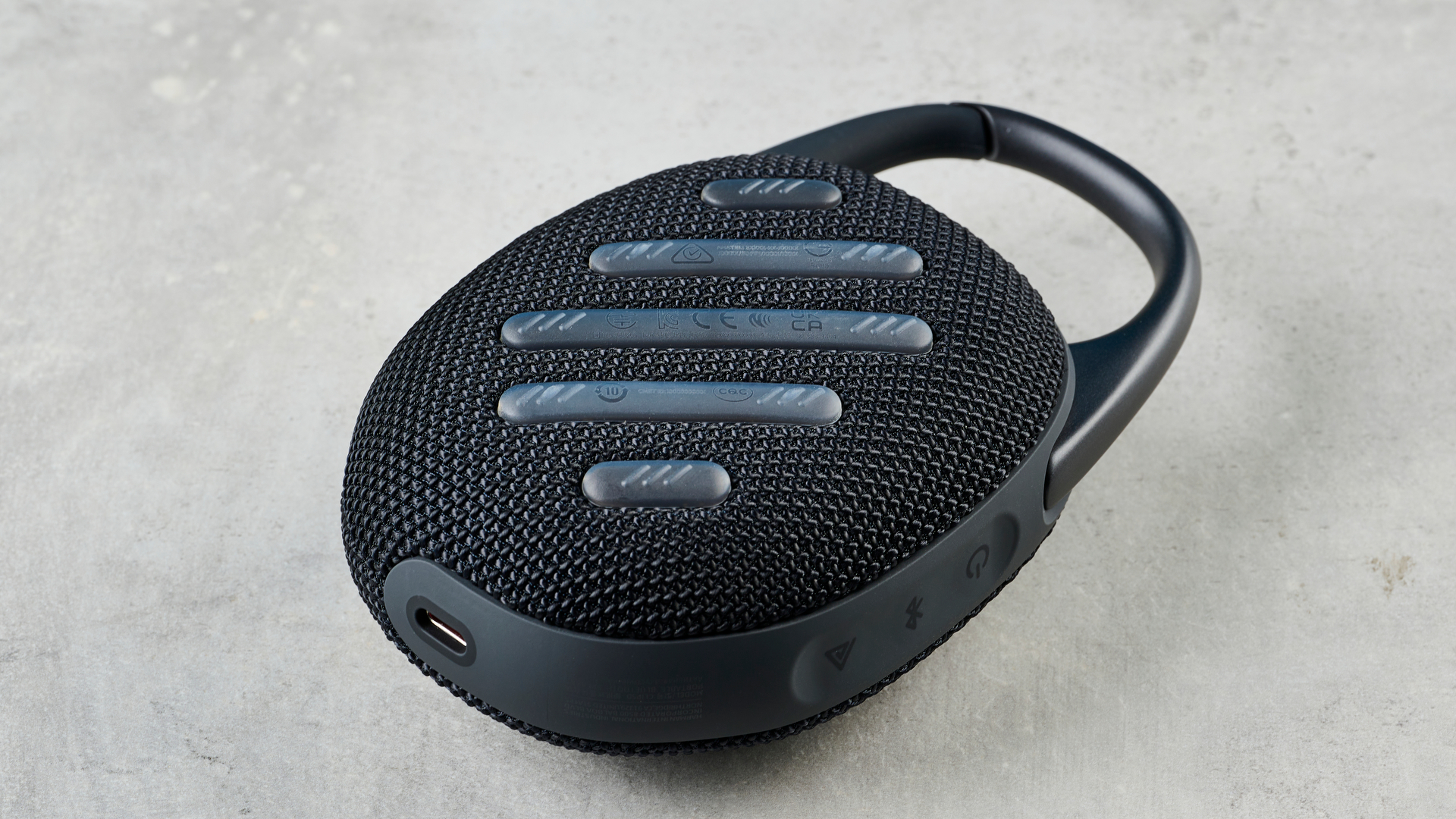
The JBL Clip 5 is a stylish speaker made in part with recycled materials, with a circular(ish) body featuring a mesh speaker cover over the front and rear faces. On its underside are five strips of grippy rubber which keep it in place when it’s laying down. You can’t make it stand upright, though. It borrows from its predecessor’s design but also improves on it. For instance, the thicker rubber strips on the back feel sturdier.
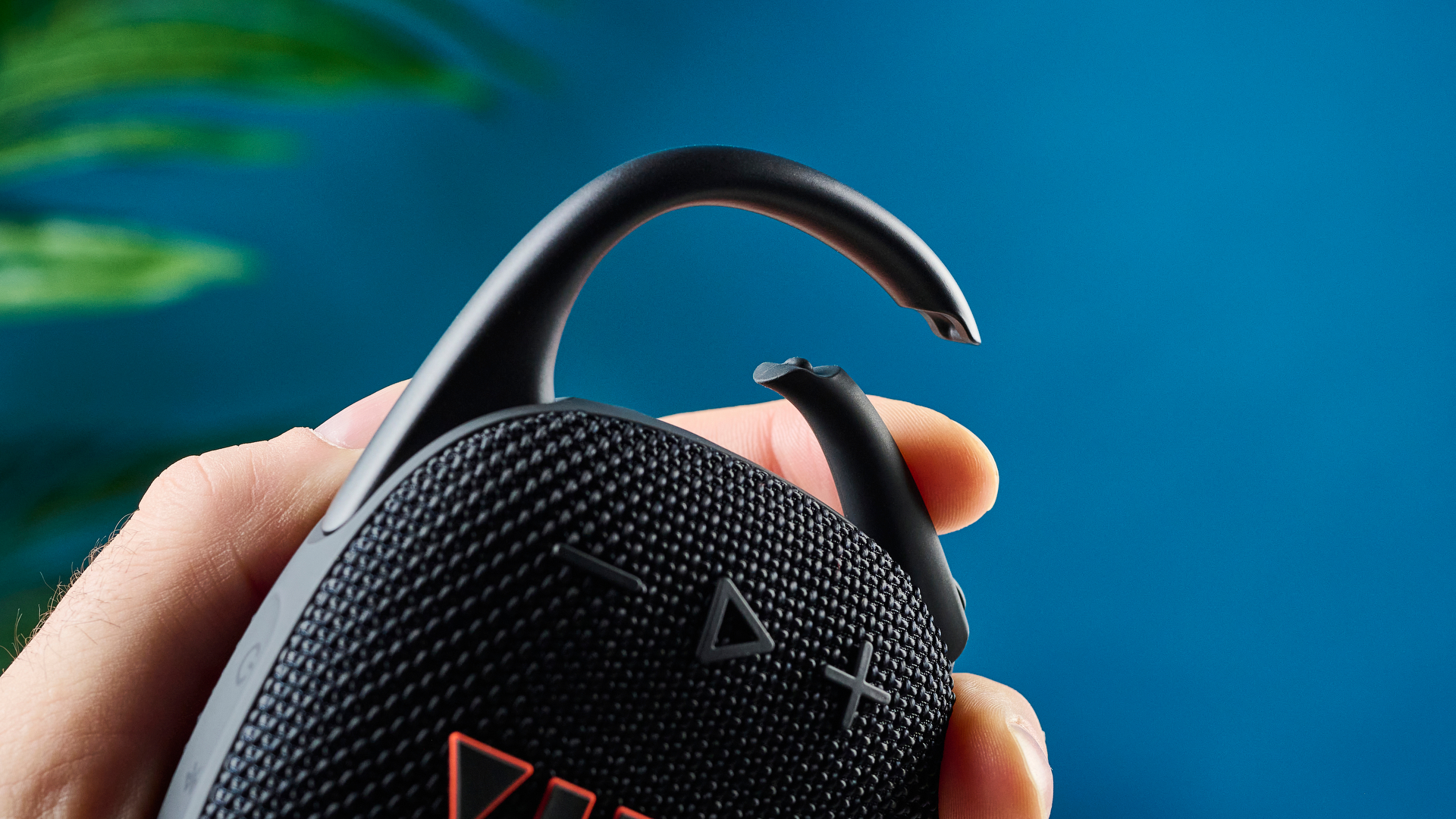
But the biggest upgrade is to the carabiner, which has a larger opening so it can hook onto larger items. I was able to hook the Clip 5 onto my belt loop and backpack, a bicycle and even my shower head. This speaker isn’t very heavy either, weighing 10.05 ounces, so I never really noticed it when it was attached to my backpack. Measuring 5.3 x 3.4 x 1.8 inches — the same as the Clip 4 — I didn’t notice it much when it was attached to my belt loop either. However, if you aren’t a fan of the carabiner but still want a small speaker that can hook onto most things, you might prefer the Tribit StormBox Micro 2 ($59) with its integrated strap instead.
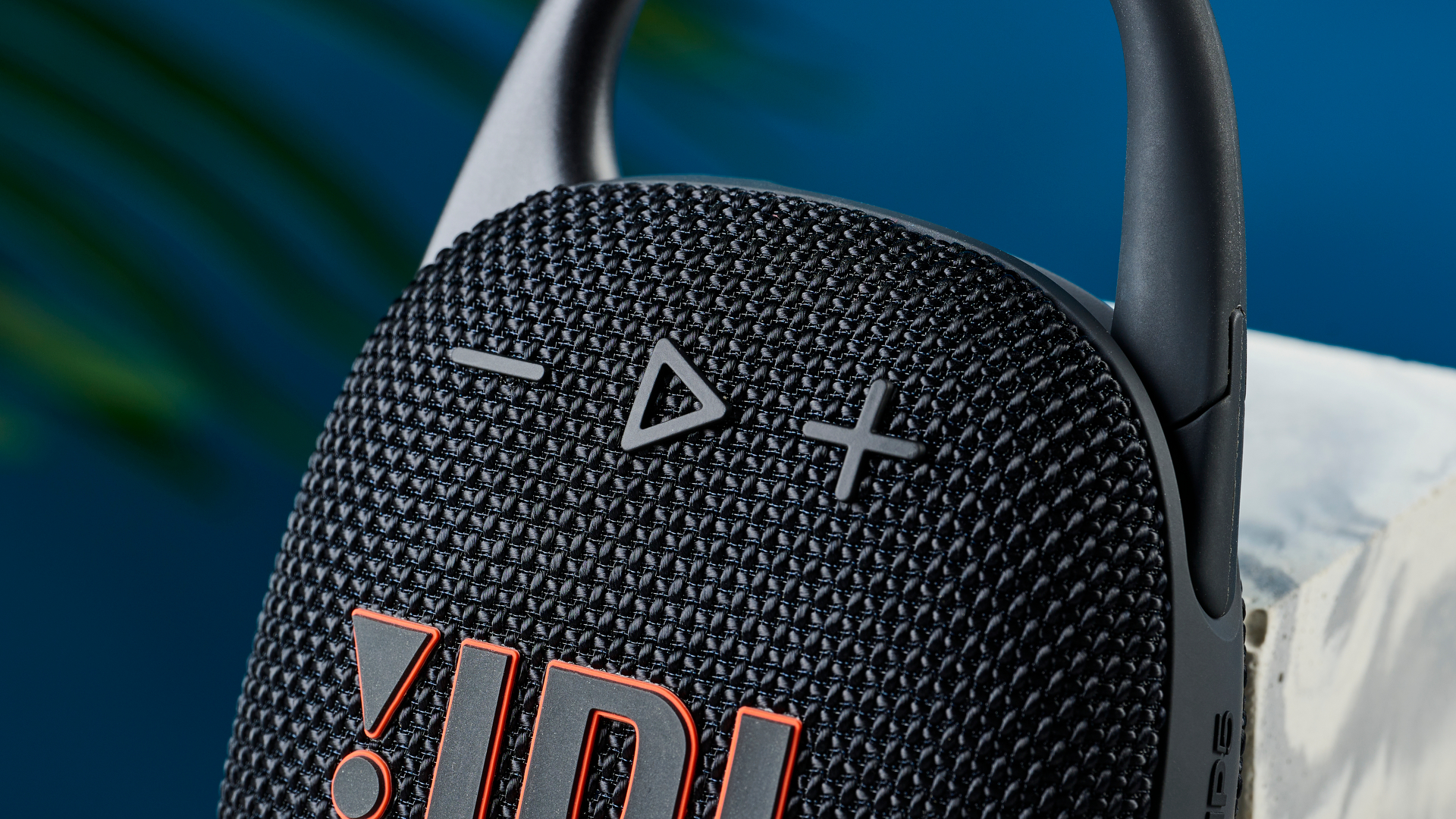
The Clip 5 has a handful of buttons which feel firm when clicked. On the front face, you’ll find volume and play buttons, and on its side are power, Bluetooth and triangular Auracast buttons.
Get instant access to breaking news, the hottest reviews, great deals and helpful tips.
JBL Clip 5 review: Features
Like the JBL Clip 4, the Clip 5 is IP67 rated, which means it’s waterproof down to 3 feet. Dropping it into the shallow end of a pool or using it in the shower won’t damage this speaker. I hooked it onto my shower head and had tunes playing throughout, and the Clip 5 was perfectly fine. It’s also dustproof, making it ideal for hikes and long walks. This is the same rating as the cheaper JBL Go 4, and the more expensive JBL Charge 5 ($179) and the Ultimate Ears Epicboom ($349).
JBL Clip 5 review: Sound quality
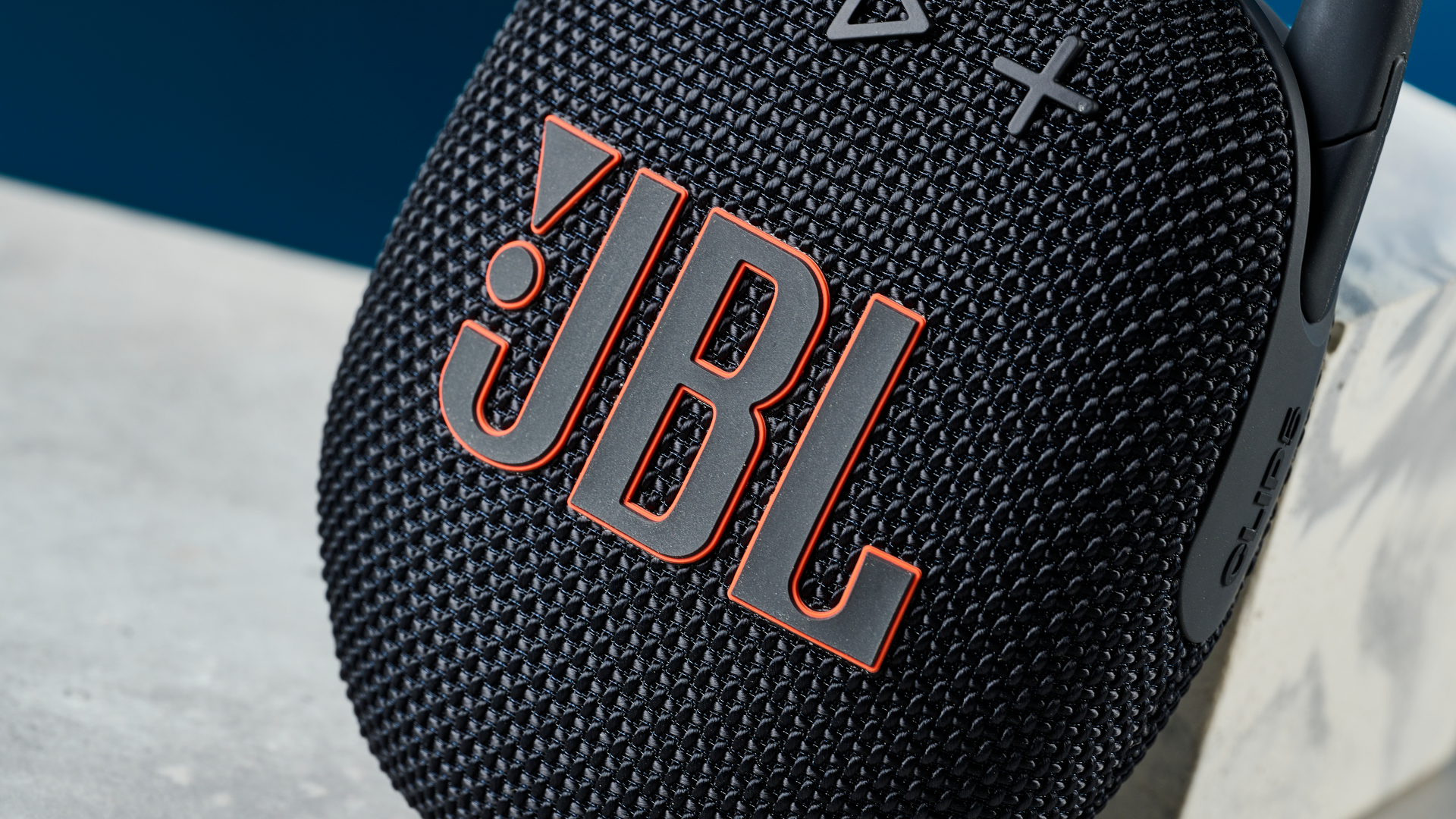
JBL claims the Clip 5 produces “JBL Pro Sound” which “packs a serious musical punch with punchy bass.” So to test this, I listened to a playlist I’ve curated on Spotify Premium, which is one of the best music streaming services, on my Google Pixel 7 Pro and MacBook Air M2. For such a small speaker, the Clip 5 boasts impressive sound quality, especially the bass. The basslines in Pink Floyd’s “Money” and Twenty One Pilots’ “No Chances” were well amplified and prominent. Kurt Cobain’s vocals in “Heart-Shaped Box” were crystal clear even as he strummed his guitar loudly and the drums kicked in.
Unlike the Go 4, the Clip 5’s sub-bass sounds are good too, as I noted while listening to “Royals” by Lorde. I could feel the rumbling sensation coursing through me as I listened to it on high volume. And when it came to testing how high notes sounded, Pink Floyd’s masterpiece “The Great Gig in the Sky” put the Clip 5 through its paces. Clare Torry’s improvised, wordless vocals sounded beautiful but never too shrill that they pierced my ears.
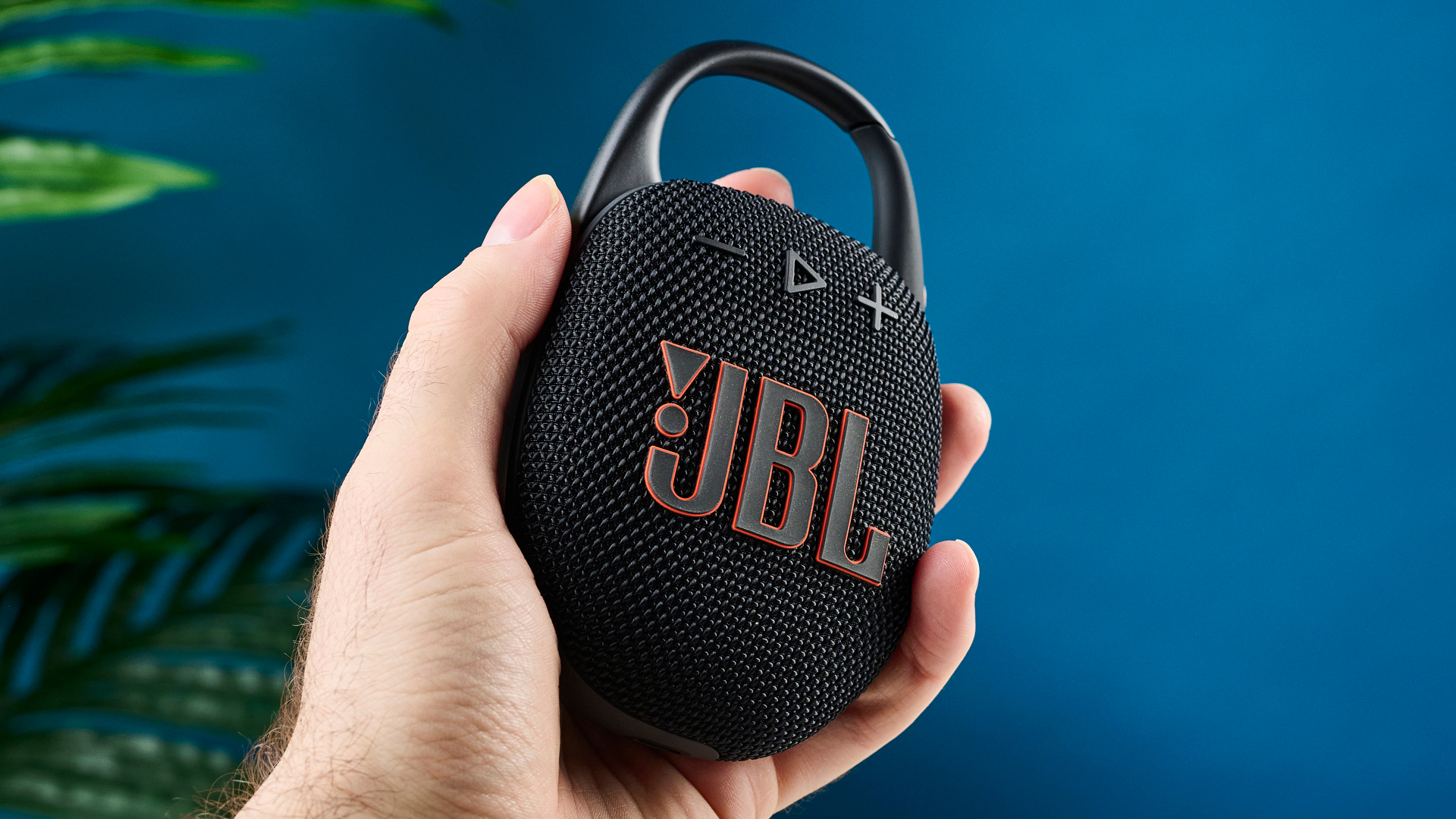
While you can use the JBL Portable app to change the equalizer from JBL signature (default) to chill, energetic and vocal boost, I didn’t notice a lot of difference. The chill EQ slightly reduces the bass but not drastically, while the energetic EQ does the opposite. Listening to “Momento Mori” by Fish in a Birdcage with the vocal boost EQ just sounded like it was playing on a slightly higher volume. You might like the Anker Soundcore 3’s ($51) EQ modes better — although the speaker isn’t as portable as the Clip 5.
What I really appreciate about the Clip 5 is that audio never sounds distorted, even when the volume is at its highest, and you can hear most frequencies. I say “most” because the Clip 5 has a dynamic frequency response range of 95Hz to 20kHz which means it can’t reproduce the lowest notes on some tracks. If you want a portable speaker with a bit more bass, try the Sony SRS-XB100 ($59) instead. The lack of these low frequencies doesn’t make the Clip 5 a terrible speaker, though, as I was still more than satisfied with the sound.
JBL Clip 5 review: Connectivity
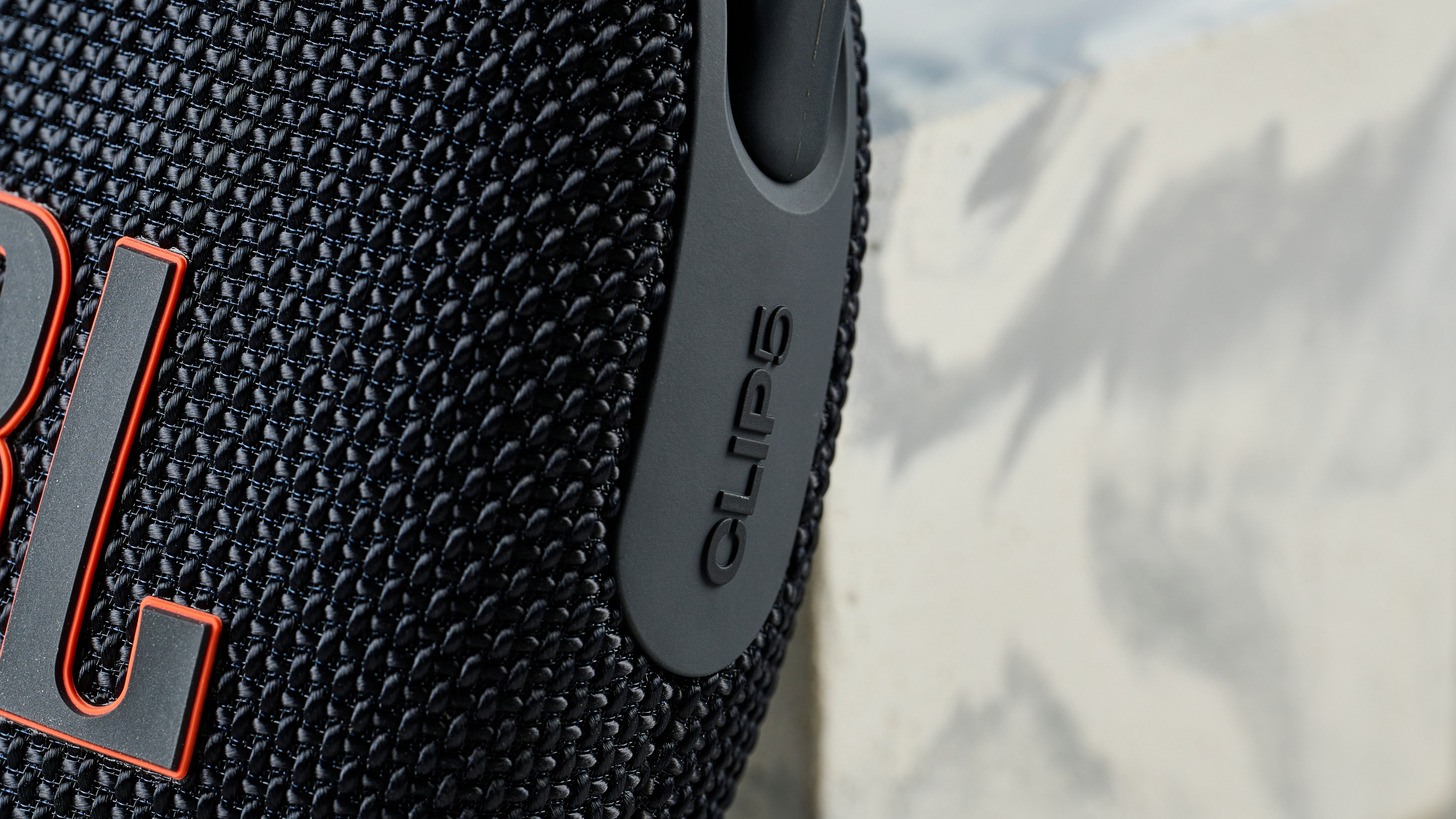
The JBL Clip 5 utilizes Bluetooth 5.3 to connect to your smartphone and laptop. It’s really easy to pair — simply hold down the Bluetooth button and your device should recognize it… eventually. It took me a while to connect it to my Google Pixel 7 Pro, but quickly restarting my phone fixed the problem.
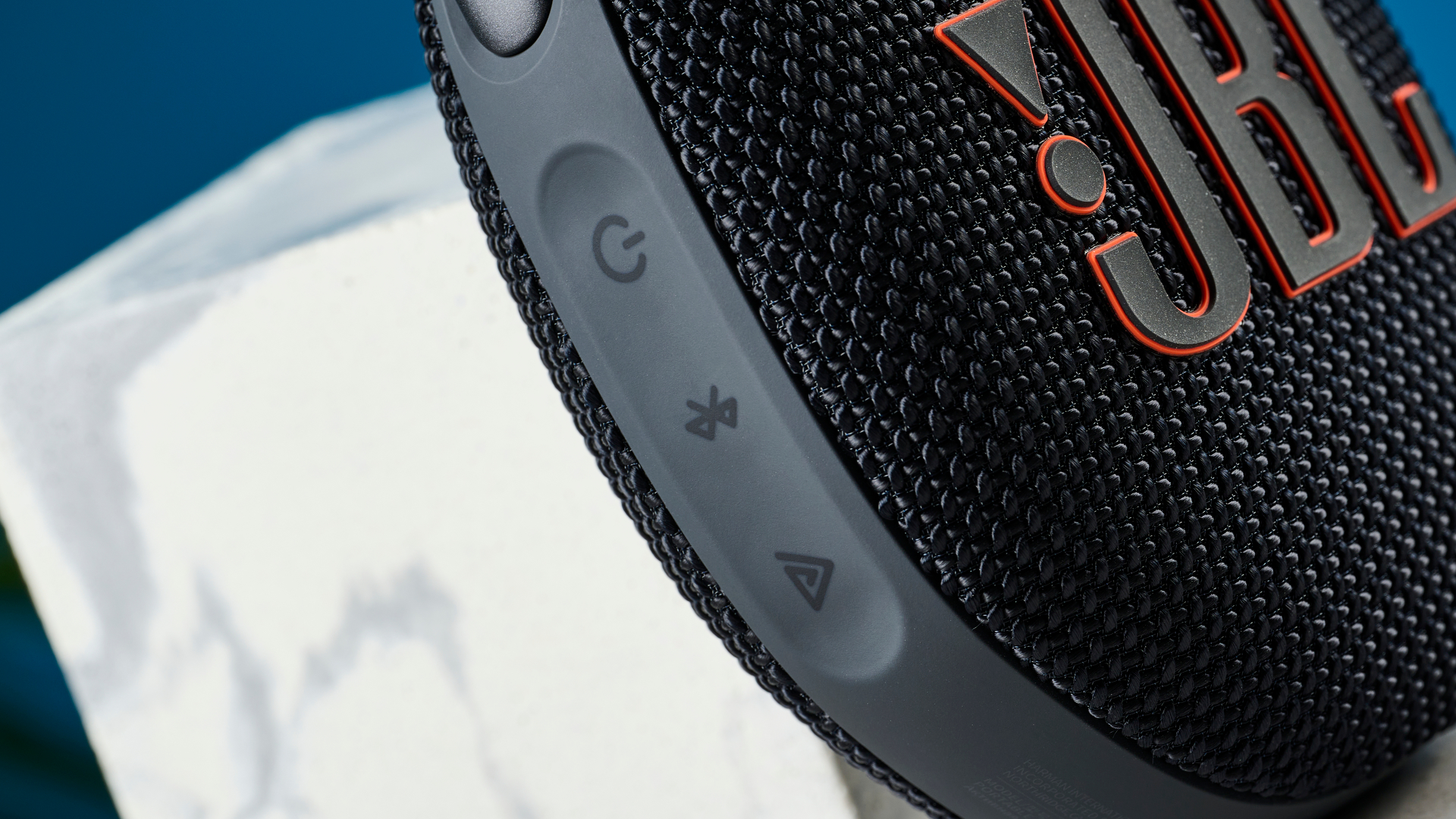
Unlike the Clip 4, the Clip 5 is Auracast-enabled, which means you can connect multiple JBL devices simultaneously to boost sound. This is especially useful if you’re at a big gathering and want everyone to enjoy the tunes. JBL’s Auracast implementation is limited to its own speakers for now, so I tested this with a Go 4. Pressing the triangular Auracast button on each speaker immediately synced them up. If you or a friend have another Clip 5, you can sync the two models together and create your own surround sound too.
JBL Clip 5 review: App
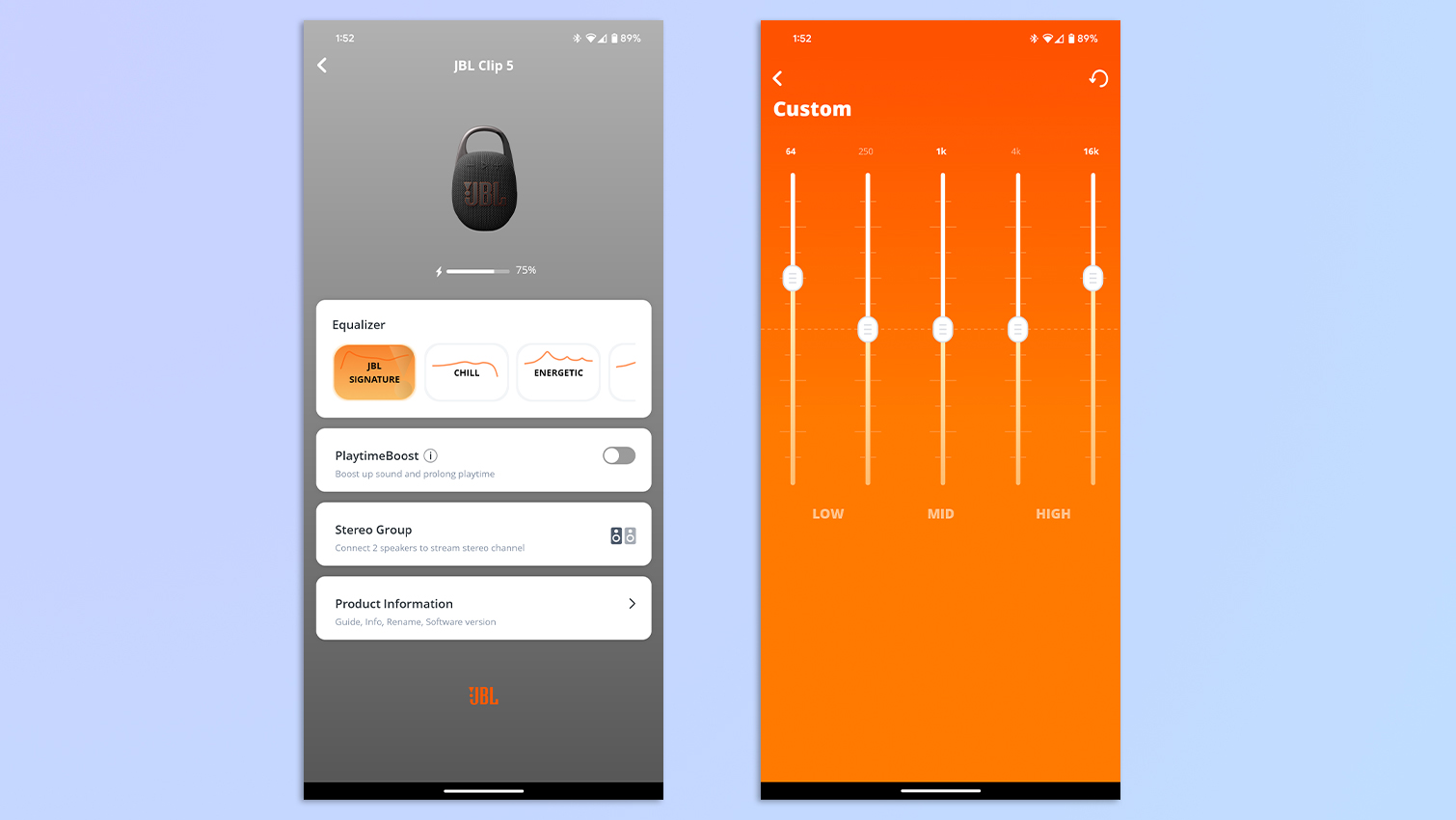
You don’t necessarily need the JBL Portable app for iOS and Android to use the Clip 5. If you do choose to use it, though, the no-frills app is fairly straightforward and intuitive to use. You can use it to update the Clip 5’s firmware, change EQ settings, customize your own EQ by adjusting the highs and lows, and connect multiple speakers in tandem via Auracast. The Clip 5 has a handy Playtime Boost feature to extend battery life (more on that soon), and this can only be enabled via the app.
JBL Clip 5 review: Battery life
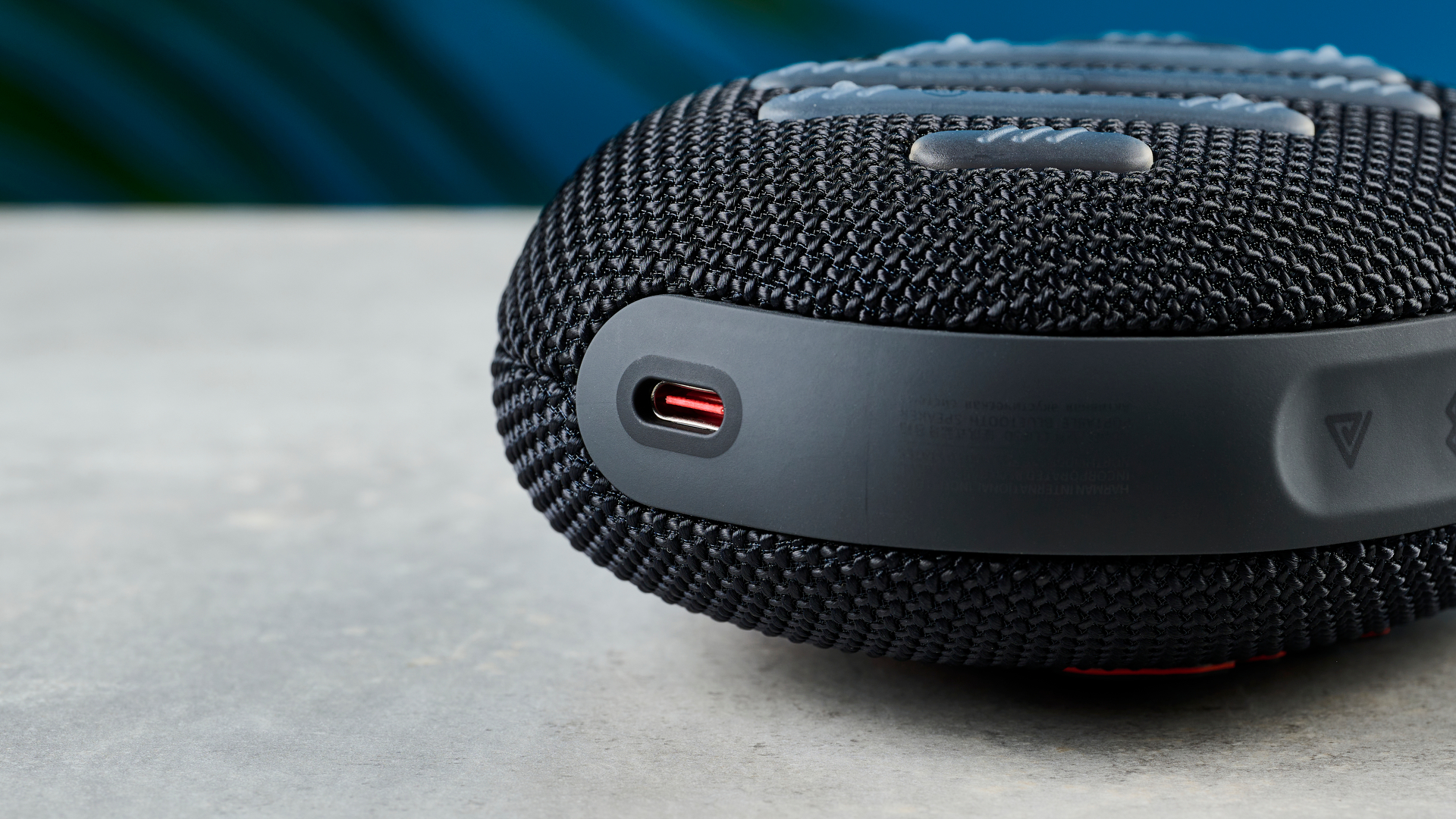
JBL claims that the Clip 5 will last you 12 hours on a single charge, or 15 hours with Playtime Boost toggled. This is better than the Clip 4 which promised 10 hours. While Playtime Boost is handy — especially if you’re traveling or adventuring — it significantly reduces the bass and music doesn’t sound nearly as good.
In my testing, the Clip 5 lasted just under 11 hours, and it took about two and a half hours to charge from zero to 100%. However, the Clip 5’s battery life pales in comparison to the similarly priced Tribit StormBox Flow which provides 30 hours of playback.
JBL Clip 5 review: Verdict
The JBL Clip 5 is a great portable speaker for $79, and it won’t give you much to complain about. It offers superb sound quality that remains consistent across most genres. Thanks to its large clip, it can be hooked onto many things, such as your belt loop, backpack, shower head or bike’s handlebars. Its IP67 rating means you won’t have to worry about water or dust damaging it. And while Auracast is currently limited to JBL speakers, it’s a handy feature to link up multiple speakers so that everyone can enjoy the music at a big gathering.

But there are a few areas in which the Clip 5’s competitors edge it out. While the Clip 5’s battery life is good, offering up to 15 hours of playback time, the Tribit StormBox Flow lasts almost double that time. In the same vein, the Anker Soundcore 3’s EQ outdoes the Clip 5’s, and the former is over $20 cheaper. And when it comes to amplifying low frequencies, the Sony SRS-XB100 has the edge over the Clip 5.
The Clip 5 is still a great portable speaker, though, that is easily likable, especially if you’re looking for one that you can simply hook onto your person and go about your day.

Nikita is a Staff Writer on the Reviews team at Tom's Guide. She's a lifelong gaming and photography enthusiast, always on the lookout for the latest tech. Having worked as a Sub Editor and Writer for Canon EMEA, she has interviewed photographers from all over the world and working in different genres. When she’s not working, Nikita can usually be found sinking hours into RPGs on her PS5, flying a drone (she's a licensed drone pilot), at a concert, or watching F1. Her work has appeared in several publications including Motor Sport Magazine, NME, Marriott Bonvoy, The Independent, and Metro.

